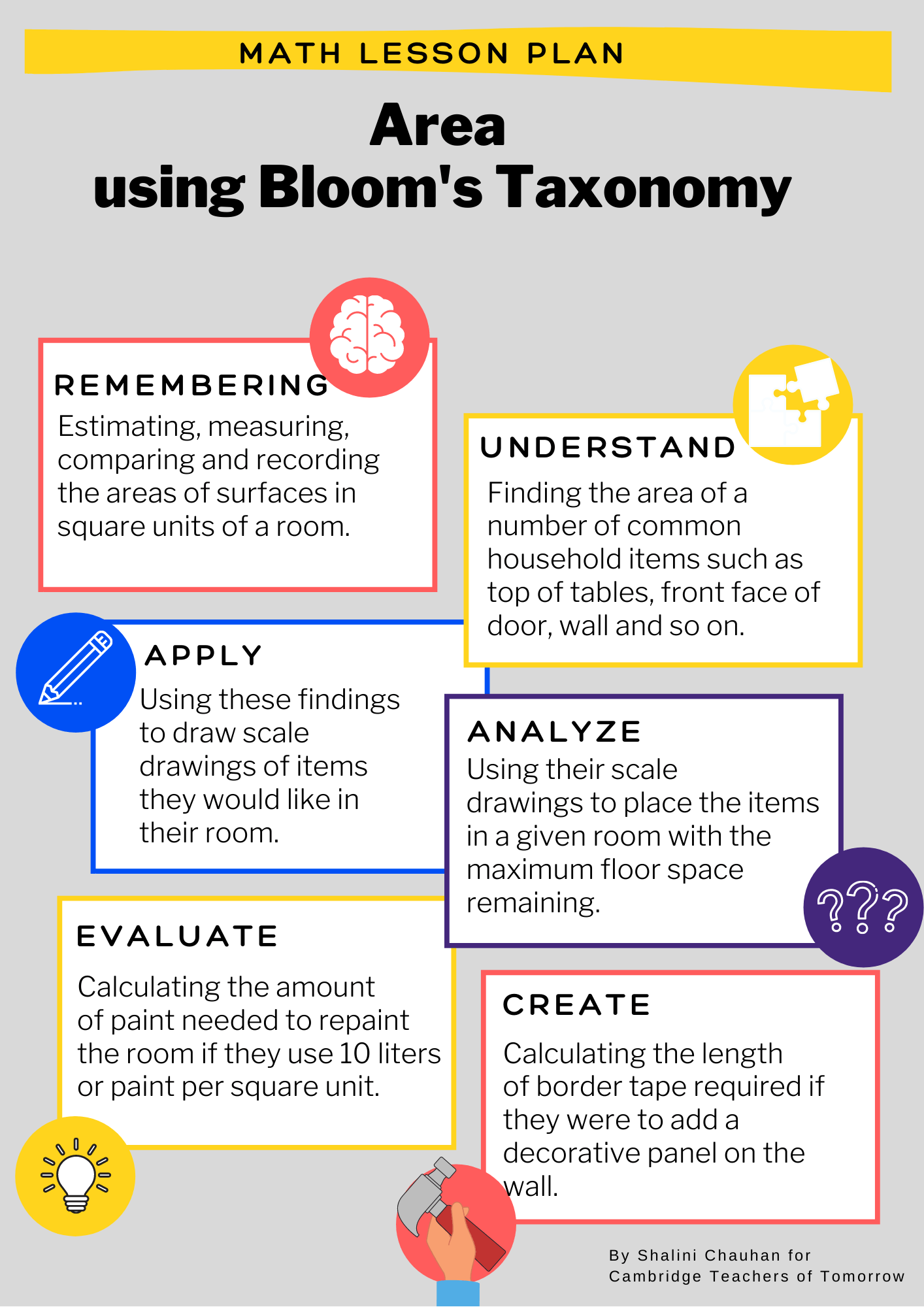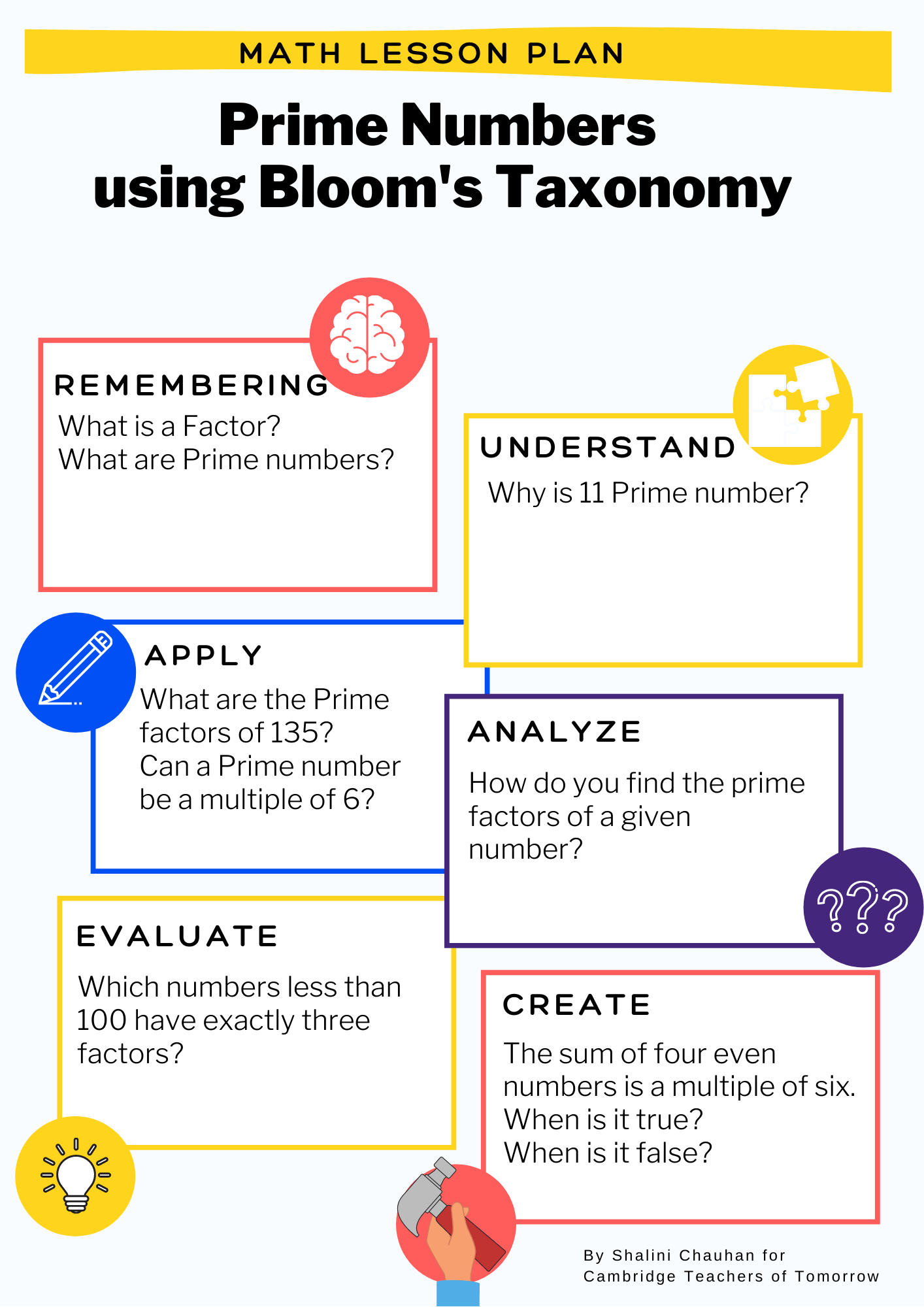Using Bloom’s Taxonomy in Lesson Planning
Similar to other taxonomies, Bloom’s Taxonomy is a hierarchical learning method. The rationale behind it is that learning at the higher levels is dependent on having attained the prerequisite knowledge and skills at lower levels.
Bloom’s Taxonomy is often displayed as a pyramid to help illustrate this hierarchy. It is a cake-like structure if imagined emphasizing that each level is built on a foundation that has been laid by the previous levels.

Over the years, this pyramid has been refined too. The Revised Bloom’s Taxonomy emphasizes students’ learning outcomes through the use of refined terms. The revised taxonomy is a refreshed take on BLOOM’S TAXONOMY from 1956, which examined cognitive skills and learning behaviour.
Nouns such as evaluation or synthesis are now replaced with verbs such as creating or evaluating respectively.
It focuses on six levels: remember, understand, apply, analyse, evaluate and create.
Application of Bloom’s Levels for different learning objectives
Here are some ways in which we can use Bloom’s levels in lesson planning to define the learning objectives for a concept/activity.
Questions at the lower levels are appropriate for:
- Evaluating students’ preparation and comprehension
- Diagnosing students’ strengths and weaknesses
- Reviewing content
Questions at higher levels of the taxonomy are most appropriate for:
- Encouraging students to think more deeply and critically
- Problem-solving and encouraging discussions
- Encouraging students to seek information on their own
My students come up with their own questions about a chapter to help each other. This was difficult in the beginning, and earlier they just asked close-ended questions. However, with practice, they begin to ask better questions – questions to which they can explain the answers. First step of problem-solving and developing computational thinking is asking the right questions to find the answers.
Examples of cognitive levels in terms of maths:
- Remembering: identifying the steps to solve, factor, evaluate, etc.
- Understanding: describe what we are looking for and why – zeros, vertex, intersection, etc.
- Apply: solve an equation or draw a graph
- Analyse: compare, contrast, and classify different functions
- Evaluate: explain and defend your solution
- Create: write your own problem
This table below elaborates more on the same.

Developing Lessons around BLOOM’S TAXONOMY
Here is a template that teachers can use to create their lessons & online learning experience using the Bloom’s Taxonomy model.

The cognitive process dimension table credits.
There are two lesson plans for teaching Area and Prime Numbers that I created using Bloom’s Taxonomy.
Using Bloom’s Taxonomy in Math Class to Create Problem Solvers
Using levels of the taxonomy has helped me define the learning objectives before I start my lesson.
Being a math teacher, I find that using Bloom’s higher levels- analysing, evaluating and creating to question students has helped them become better problem-solvers.
As a teacher, I ask questions purposefully to achieve learning objectives and the level of questions remains different even within a single chapter. I ask students to explain their math answers, using drawings or diagrams and numbers (equations), is an excellent way to assess if they really understand the concept taught.
Read other articles with more practical tips by Shalini ma’am here-
Online Teaching for First-Timers Made Easy
5 things teachers must do to improve assessment reliability
Math Magic, Making Teaching Multiplication Fun and Easy with Bingo!
Students Leading Active Learning in Classrooms
Math Magic: Fostering Mathematical Thinking and Problem Solving
Thank you, Teachers!

We would like to extend our heartfelt gratitude towards the entire teaching community for being the torchbearers of learning even in the darkest times and never backing out.
We want to thank you for being the Learning Superheroes. We are here to support every teacher. Get access to free Cambridge resources and worksheets here.















2 Comments
2 Pings & Trackbacks
Pingback:ปลดล็อกวิธีตั้งคำถาม ที่เชื่อมโยงความคิดและอารมณ์ - SELminder
Pingback:วิธีตั้งคำถามที่เชื่อมโยงความคิดและอารมณ์ - SELminder